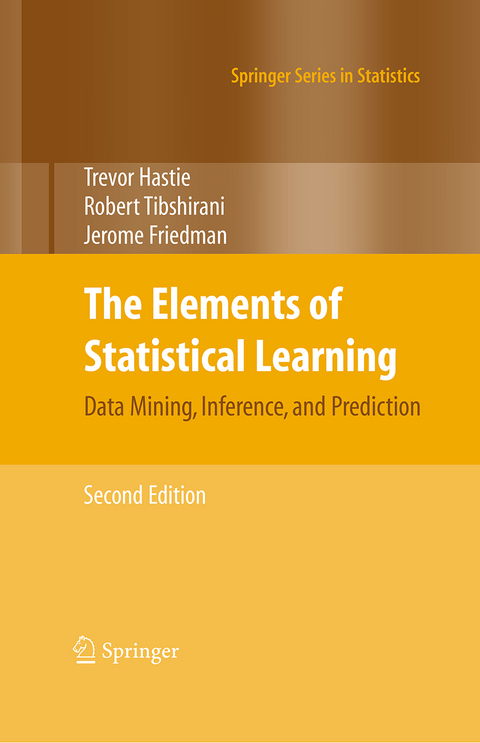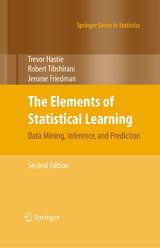The Elements of Statistical Learning
Springer-Verlag New York Inc.
978-0-387-84857-0 (ISBN)
This book describes the important ideas in a variety of fields such as medicine, biology, finance, and marketing in a common conceptual framework. While the approach is statistical, the emphasis is on concepts rather than mathematics. Many examples are given, with a liberal use of colour graphics. It is a valuable resource for statisticians and anyone interested in data mining in science or industry. The book's coverage is broad, from supervised learning (prediction) to unsupervised learning. The many topics include neural networks, support vector machines, classification trees and boosting---the first comprehensive treatment of this topic in any book.
This major new edition features many topics not covered in the original, including graphical models, random forests, ensemble methods, least angle regression & path algorithms for the lasso, non-negative matrix factorisation, and spectral clustering. There is also a chapter on methods for "wide'' data (p bigger than n), including multiple testing and false discovery rates.
Trevor Hastie, Robert Tibshirani, and Jerome Friedman are professors of statistics at Stanford University. They are prominent researchers in this area: Hastie and Tibshirani developed generalized additive models and wrote a popular book of that title. Hastie co-developed much of the statistical modeling software and environment in R/S-PLUS and invented principal curves and surfaces. Tibshirani proposed the lasso and is co-author of the very successful An Introduction to the Bootstrap. Friedman is the co-inventor of many data-mining tools including CART, MARS, projection pursuit and gradient boosting.
Overview of Supervised Learning.- Linear Methods for Regression.- Linear Methods for Classification.- Basis Expansions and Regularization.- Kernel Smoothing Methods.- Model Assessment and Selection.- Model Inference and Averaging.- Additive Models, Trees, and Related Methods.- Boosting and Additive Trees.- Neural Networks.- Support Vector Machines and Flexible Discriminants.- Prototype Methods and Nearest-Neighbors.- Unsupervised Learning.- Random Forests.- Ensemble Learning.- Undirected Graphical Models.- High-Dimensional Problems: p ? N.
| Erscheint lt. Verlag | 21.4.2017 |
|---|---|
| Reihe/Serie | Springer Series in Statistics |
| Zusatzinfo | 604 Illustrations, color; 54 Illustrations, black and white; XXII, 745 p. 658 illus., 604 illus. in color. |
| Verlagsort | New York, NY |
| Sprache | englisch |
| Maße | 155 x 235 mm |
| Themenwelt | Informatik ► Datenbanken ► Data Warehouse / Data Mining |
| Informatik ► Theorie / Studium ► Künstliche Intelligenz / Robotik | |
| Mathematik / Informatik ► Mathematik ► Statistik | |
| Mathematik / Informatik ► Mathematik ► Wahrscheinlichkeit / Kombinatorik | |
| Naturwissenschaften ► Biologie | |
| ISBN-10 | 0-387-84857-6 / 0387848576 |
| ISBN-13 | 978-0-387-84857-0 / 9780387848570 |
| Zustand | Neuware |
| Informationen gemäß Produktsicherheitsverordnung (GPSR) | |
| Haben Sie eine Frage zum Produkt? |
aus dem Bereich





